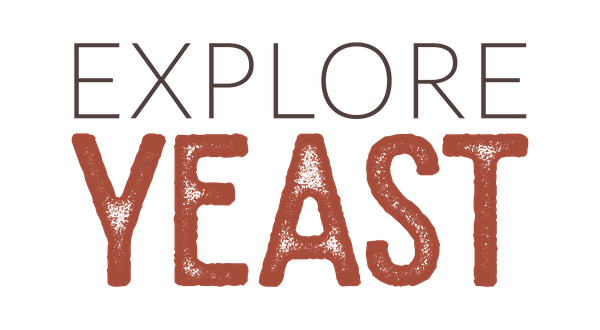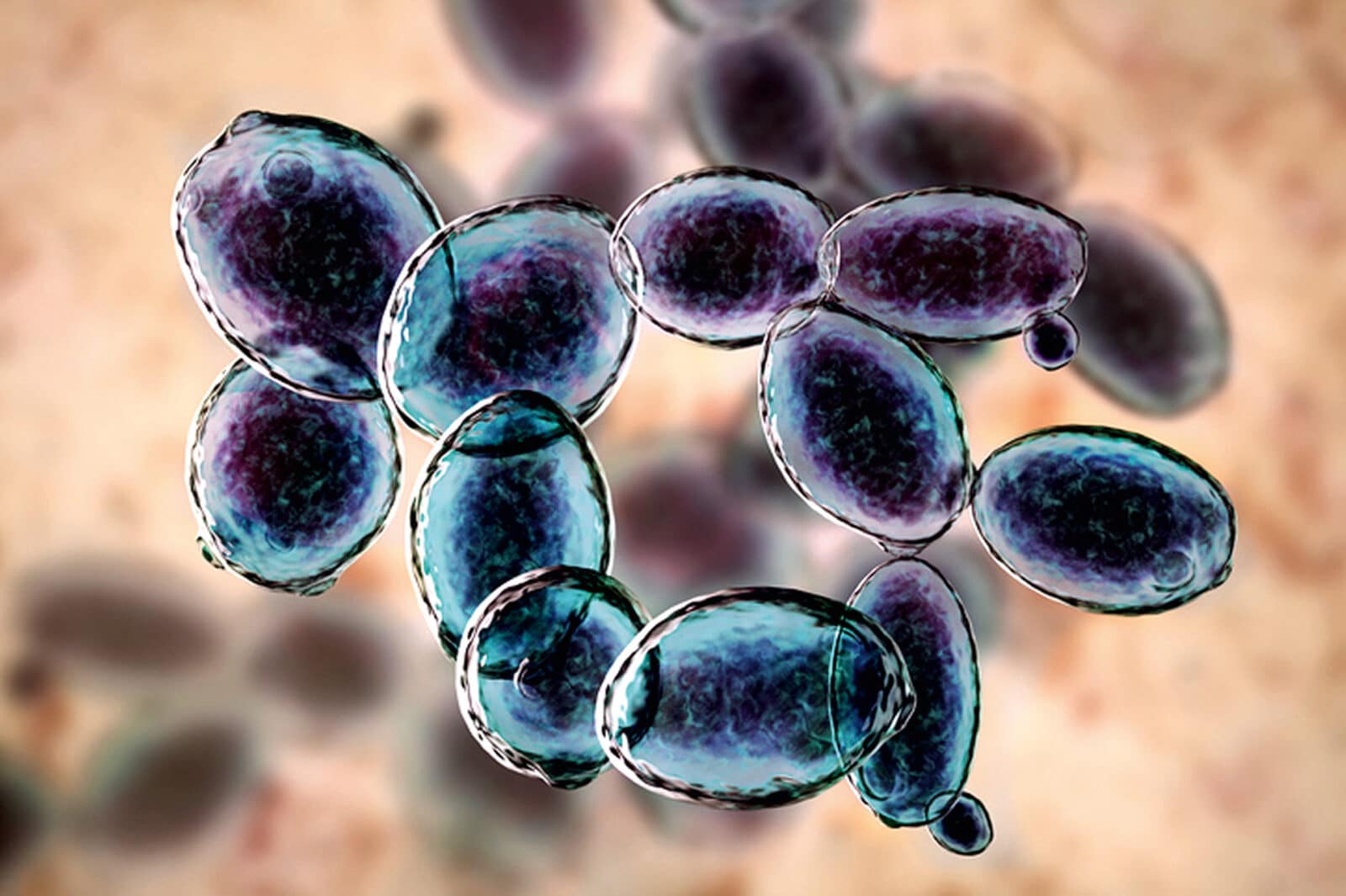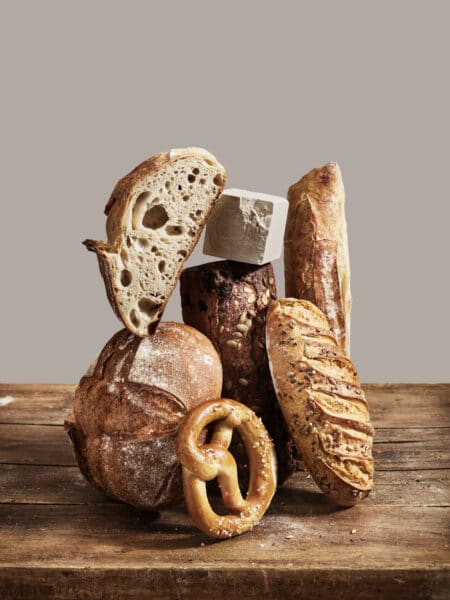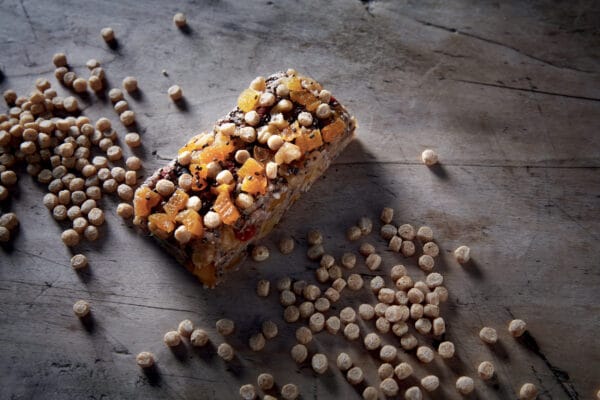Interesting facts about yeast
Yeast is tiny organism: the yeast cell is smaller than a grain of sand and can only be seen with a microscope. It takes 20,000,000,000 (twenty billion) yeast cells to weigh one gram, or 1/28 of an ounce, of cake yeast!
Yeast is naturally occurring on the skin of fruits and berries, but can also be found in the soil and in the air.
It is one of the earliest domesticated organisms and is still used for producing bread, beer, and wine, as well as many other products through natural fermentation.
Yeast belongs to the fungus family and like other edible fungi like mushrooms is available at your local supermarket.
What’s the secret of yeast?
This active microorganism is actually called Saccharomyces cerevisiae. It is able to use carbohydrates to develop and produce carbon dioxide that makes the bread dough rise. This natural process is used for producing fermented foods (kombucha, sauerkraut, beer, wine, cacao…) and many other compounds like vitamins, flavors, and antibiotics…. It is called FERMENTATION.
Let the stories live on in the book Fermentation, History, uses, and recipes!
This book takes us on a journey through the exploration of a history that is almost as old as humanity, followed by an overview of the most iconic fermented foods (bread, cheese, beer, coffee, yogurt…). It transports us into a realm of unknown tastes with its examination of a history that is almost as old as humanity.
The Paul Bocuse Institute chefs have come up with over 30 delectable recipes, ranging from easy (pickles, salmon gravlax, pretzels, kombucha) to more sophisticated (chocolate mousse with cocoa nibs and coffee cream). Everyone may taste the profound flavor of fermentation in these recipes!
Without yeast, beer, bread or wine is nothing. Yeast is even a key ingredient in bioethanol manufacturing playing its part in this long journey towards the decarbonisation of transport. The single-celled microorganism deserves our respect!
So how does yeast do its magical work?
Did you know, unlike humans, yeast can live with or without oxygen!
- With oxygen, yeast can breathe and grow. This is the method for producing yeast in bulk.
- Without oxygen, yeast draws energy from the fermentation of sugars. Thanks to yeast enzymes1 that are naturally present sugars are converted into carbon dioxide (CO2), alcohol and heat. This process is used to make bread, wine, and beer.
The fermentation process also produces different flavors, which contribute to the unique and delicious taste of bread and other fermented products.
Making bread involves both processes. First, the kneading brings air and allows the yeast to develop. During the leavening, the yeast ferments, and CO2 bubbles form and make the dough rise. At the beginning of the baking process, CO2 continues to grow. Then, the yeast dies at about 50°C and the alcohol produced is evaporated.
Did you know?
Today, the yeast that you can find in the air may not be a specific baker’s strain. Nowadays, bakers worldwide use selected yeast, specially chosen for its fermentation capacity and its productivity: the Saccharomyces cerevisiae. The use of highly specialized yeast is an absolute necessity, as bakers require more stable and more “process-tolerant” yeast that follows the technological evolution of bread-making and new consumption trends.
Baking with yeast or with baking powder: what’s the difference?
Both have the same purpose of acting as a leavening agent. But what they are and how they work are quite different. Yeast is a natural living microorganism that enables the natural fermentation of sugars. Baking powder is a chemical product composed of bicarbonate of soda, potassium hydrogen tartrate, and cornstarch. The baking powder rising effect comes from a chemical reaction that is acid-based and is activated by mixing it with liquid and adding heat. There is no fermentation at all with baking powder and that’s a big difference! Another notable difference is that baking powder does not have the same nutritional composition as yeast. Yeast is rich in proteins, vitamins, and minerals. The baking powder is not.
What can yeast do for our health?
Yeast is a natural ingredient that has played an important role in the human diet for thousands of years. Yeast, as an active living microorganism, can provide probiotic benefits.
But that’s not all!
In recent years, many people have started consuming a specific type of yeast called “nutritional yeast” (or NOOCH). It can be used in dietary supplements, for seasoning and as a functional food. Nutritional yeast is an excellent way of getting essential nutrients like proteins, vitamins and minerals including:
- proteins which contain all nine essential amino acids needed by humans;
- dietary fibers and several vitamins like thiamine (B1), riboflavin (B2), niacin (B3), Pyridoxine (B6) and folic acid (B9).
Additionally, nutritional yeast is low in sodium (the constituent of salt) and free from cholesterol and lipids.
From yeast to yeast extracts
Today, yeast is produced in different forms (fresh in blocks, dried in micro-granules, in liquid, put in pills, etc.). Dry yeast has a longer conservation time and yeast is inactivated – generally by heat – for nutritional yeast. Depending on the form, yeast can easily be adapted for many different industrial processes.
Like yeast, yeast extract is a natural ingredient used by many professionals in the food industry. Like traditional yeast, it offers high nutritional value, but does not have the same purpose. It’s commonly used in cooking to enhance the flavor of foods, such as herbs or spices. Yeast extract is a natural-origin ingredient that is produced without the use of chemical substances or additives. As a result, it is not considered an additive.
How are these yeast extracts obtained?
Yeast extracts are produced from fresh yeast. Thanks to the joint action of heat and yeast-specific enzymes:
- The enzymes will break down the proteins and other macromolecules in the cell into smaller soluble molecules, resulting in yeast extracts with aromatic characteristics.
- As the yeast wall cracks, it releases its tiny chemicals.
- The yeast extracts are then separated from the cell walls by means of a mechanical procedure that employs centrifugal force.

Why you should care about yeast
Yeast is an affordable solution to getting essential proteins, vitamins, and minerals which can facilitate a healthy and happy life! Yeast is therefore one of the most promising answers to feed the 9 billion people in our world in a safer, healthier, and more sustainable way.



